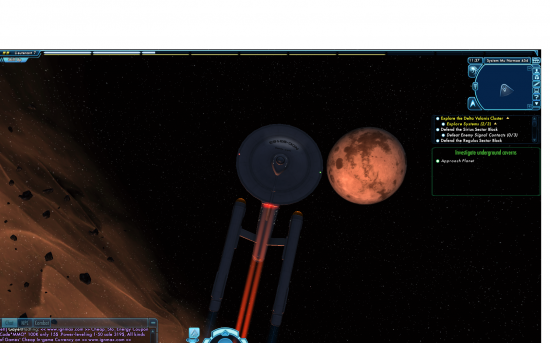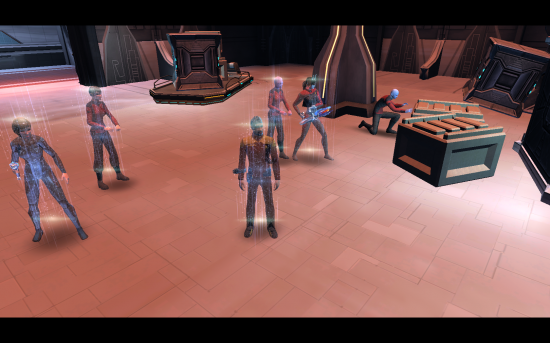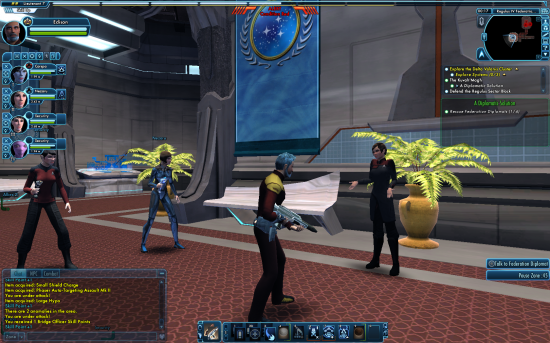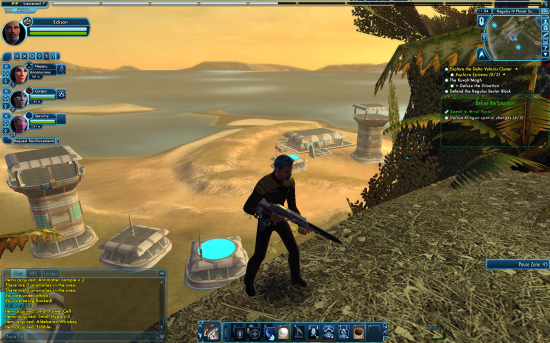
Buback ubin my dubay, thubis wubas Zuboubom.

Welcome to the Wilcox Family weB LOG, your source for the latest Wilcox news, anecdotes, and rants; and, as Jack Benny quipped on his first radio show (March 29, 1932), “There will be a slight pause while you say, ‘Who cares?’â€â€

Buback ubin my dubay, thubis wubas Zuboubom.
(Additional updates on January 31, 2021)
One of the things we’re doing to pass the time is winding down the day with a “good” pandemic flick. So far, we’re only gotten through two. I’ll update this post as we get through more. Spoiler alert: I’ll be careful not to give too much away, but can’t guarantee a no-spoiler review.
First up was The Andromeda Strain (1971, IMDB score: 7.2). Two films and one miniseries have been based on this early novel by Michael Crichton, and this is generally considered the best of them. If nothing else, it’s the one that adheres closest to the book.
In today’s every-film-is-a-blockbuster world, one tends to forget that, due to technical, economic, and other constraints, films were often extremely poorly paced, chaotic, and somewhat boring. There’s almost no background score for the film, and what’s there is entirely forgettable. Though the sterile technique is relatively good in this, it’s far from perfect; science is only so-so. Performances are decent, and one item of note is that this is probably the last time in film that a supermodel prototype was not used for a female scientist. It also reminded us that people used to smoke.
Outbreak (1995, IMDB score: 6.6) Horrible sterile technique, mostly poor science (although some good basic virology) and an entire military branch that refuses to obey orders. Excellent makeup for disease effects. (Bonus: Ebola-type viruses cause one’s hair to lose its curl as the disease progresses. Who knew?) Dustin Hoffman and cast provide credible performances while behaving incredibly, although the basic scenario is plausible. There’s a conspiracy-driven sub plot that doesn’t quite fit. Hoffman seems schizoid when it comes to protecting the world from an Ebola-type outbreak. He’s determined to cure it, but becomes positively reckless in his investigation.
We then tackled The Hot Zone, a National Geographic miniseries based on Richard Preston’s excellent account of the same name. (2019, IMDB score: 7.3). This was an only-moderately dramatized version of real events, with which I was familiar from reading Preston’s book. This scored extremely well on the science, and captures the horror of viral hemorrhagic fevers. The world can be very grateful that this strain only affected monkeys.
(Updated on January 31, 2021.) It took us a while, but we finally returned to another pandemic film: Contagion (2011, IMDB score: 6.7). This film deals with a global pandemic of a mutated zoonotic virus with a rapid, 25% mortality rate and an R0 of 4, a true “doomsday scenario.” What’s impressive is how much of the societal effects this film gets right, as we now have a case study of a pandemic with a mostly low but widely varied mortality rate (highly affected by age) and an R0 that ranges from 1.4 to 3.9 (according to Medscape). There are food shortages and hoarding, social media propagators of disinformation, and a CDC sometimes hamstrung by politics. The scenes of empty stores, shopping malls, and gyms were particularly poignant. The precautions taken by scientists are sound, and feel very real, and the science is pretty good, if slightly vague, until the end, where a single act becomes a deus ex machina. Our own experiences have made this film seem far more authentic than we would have realized; I don’t think we would have appreciated it as much in 2011.
That’s right! Look who seems to be part of Lost’s Dharma Initiative.
From ThinkGeek.
NaNi:
While I was getting ready to go to work this morning, Naomi stood in front of the refrigerator, and said, “Dad, watch what I have learned.” She opened the refrigerator, and demonstrated how she could press the switch in the front to turn the refrigerator light off. She proudly announced, “I figured out how this works. See,” she closed the refrigerator door slowly, “when you close the door, it presses this switch, and the light goes off.”
“Good investigation, Naomi,” I praised. “My little engineer.”
“Just like her daddy,” she responded, with her usual smile.
David:
David was watching an online episode of “Bleach” anime at the computer. “So, watching some ShÅjo manga?” I asked, sneakily.
Unusually, I fooled him. “Yes,” he replied, “Wait! NOOOOOO!”
(Laughter)
Courtesy of Netflix streaming over our Xbox 360, my son David (primarily) and I have been enjoying watching Adam-12, the police television series that started the year I was born, and ran for seven years thereafter, and much longer in syndication. Adam-12 was one of my favorite televisions programs when I was a kid, and I remain impressed by its lasting quality, straightforward, honest characters, and clear moral implications. (Director Jack Webb, of Dragnet fame, was clearly not an “everybody’s-doing-it” kind of guy, even in the ’60s.)

In 1978, I was in Mrs. Lovell’s third grade class at Parkview Elementary School, in Easton, Massachusetts.
One day we were reviewing vocabulary with a small reading group after a multiple-choice exercise. The vocabulary word in discussion was heroine, and, among the possible definitions was a medicine.
When the correct answer was given by another student, I suggested, a medicine, getting me quite a troubled look from Mrs. Lovell, who then asked, “Do any of you know what he is referring to?” “Drugs,” answered Dennis, with an implication of disgust.
I’d never heard the female version of hero, but Adam-12 had provided me with an excellent education in the dangers of illegal drug use. In my eight-year-old mind, heroin was a drug, and one obtained medicines at the drugstore, so a drug such as heroin perhaps could be classified as a medicine.
I was too embarrassed by the reactions of my teacher and peers to explain this logic, and the incident eventually became eclipsed by even worse incidents of faux pas that we shall consign to the horrible depths of “the junior high years.”
Adam-12 photograph courtesy of http://www.kentmccord.com.
A couple of weeks ago marked a watershed moment in MMORPGs: Star Trek Online wrapped up its mostly-open-beta program, and went live with its early-access-for-preorders launch. Delighted with the quality of the game, we sprung for a lifetime membership, which is approximately as costly as paying per-month for a year and a half. (I wish World of WarCraft would offer such a deal.)
The boys and I have been hooked. (Isaac, the weasel, has remained several levels ahead of me, and is about to get a promotion that will give him access to even better ships.) The game features space exploration and combat, and ground exploration and combat. The missions are described as “episodes,” and, like the plots of a television series, often require following unexpected developments and changing tasks as the plot unfolds across planetary surfaces and space. Each player captains his or her own starship, outfitting it with weapons, equipment that gives bonuses, and senior officers who also provide special abilities. I’ve attached a couple of screen shots of the gorgeously-rendered space exploration scenes below. The planets are beautiful, often including moving cloud layers that partly cover the ground below, as well as appropriate atmospheric illumination by the planet’s star, depending on one’s location in orbit.

(My first ship is named the USS Nichelle.)

Ground locations are often also highly detailed, with a wide variety of plants and terrain. Some of the outdoor ground locations (there are also caves, and starbase and other complex interiors) sometimes seem very reminiscent of the ToS set locations, although generally with more detail than the show’s budget allowed.
Combat and exploration are both integral to the game. Combat is far more skill-intensive than most MMORPGs, particularly as one commands an “away team” to whom orders must be given, and as space combat works in three dimensions and often against multiple enemies. Some missions automatically draft the cooperation of other players, and nearly everything can be accomplished by choice as a teamwork exercise. Like the best MMOs available, there are also large PVP combat areas where players can earn even more rewards.
The game is still in early release, and is apparently only going to get better, but it still shows some weaknesses of an early release with higher-than-expected levels of demand on its servers, and some frustratingly common bugs, such as the game locking up.
Overall, though, our romps through the Star Trek universe have been delightful, with much future enjoyment anticipated.
Addendum, Stardate 201002.18: I am fully convinced that this game was worth every penny. Even my beloved World of WarCraft has never captured me with this intensity.



While I am working on posts about “The Weaker Vessel,” and “Verbal/Emotional Abuse” (and looking into how a ‘bot hacked my BLOG files to include hidden Spam links), here’s a bit to get you thinking:
Clay Shirky published a lightly edited transcript of his speech at a recent Web 2.0 conference, entitled, “Gin, Television, and Social Surplus.”
You will definitely want to read the whole post, but here are a few noteworthy excerpts:
Starting with the Second World War a whole series of things happened–rising GDP per capita, rising educational attainment, rising life expectancy and, critically, a rising number of people who were working five-day work weeks. For the first time, society forced onto an enormous number of its citizens the requirement to manage something they had never had to manage before–free time.
And what did we do with that free time? Well, mostly we spent it watching TV.
How much television do we watch?
[H]ow big is that surplus? So if you take Wikipedia as a kind of unit, all of Wikipedia, the whole project–every page, every edit, every talk page, every line of code, in every language that Wikipedia exists in–that represents something like the cumulation of 100 million hours of human thought. I worked this out with Martin Wattenberg at IBM; it’s a back-of-the-envelope calculation, but it’s the right order of magnitude, about 100 million hours of thought.
And television watching? Two hundred billion hours, in the U.S. alone, every year. Put another way, now that we have a unit, that’s 2,000 Wikipedia projects a year spent watching television. Or put still another way, in the U.S., we spend 100 million hours every weekend, just watching the ads. This is a pretty big surplus. People asking, “Where do they find the time?” when they’re looking at things like Wikipedia don’t understand how tiny that entire project is, as a carve-out of this asset that’s finally being dragged into what Tim calls an architecture of participation.
This reminds me, I was listening to “This American Life,” episode 328, “What I Learned from Television.” In a live broadcast, Ira Glass announces to the audience that average Americans watch 29 hours of television a week. There is a loud, collective gasp from the audience, which is composed of course, of not merely NPR listeners, but NPR listeners who paid to go out and see a live presentation of the radio program. Twenty-nine hours is the average? Suddenly I don’t feel so bad about playing World of WarCraft.
As Shirky writes,
In this same conversation with the TV producer I was talking about World of WarCraft guilds, and as I was talking, I could sort of see what she was thinking: “Losers. Grown men sitting in their basement pretending to be elves.”
At least they’re doing something.
But I digress.
As I write this, our pastor is speaking on “Reflections from the Back of a Bike,” noting how we prefer to ride in a car metaphorically driven by the pastor, instead of providing our own power on a bicycle, comparing the early church’s prayer to “speak the Word of God with boldness” as recorded in Acts 4:29 to our typical prayers of, well, whatever; of how we fail to really act on our belief in an Almighty God and actually serve Him with actions, every hour of our lives. How we need to embrace the mission of Christ and actually do something to reflect what we say we believe.
To be honest, I have heard many such sermons over the years, but this one is different. It’s Scriptural. It isn’t designed to evoke an emotional response. Its success won’t be measured by the number of people who raise their hands or “go forward” to the altar. Its success will, rather, be measured by how we let Christ give us boldness to use our associations and talents and burdens to change others’ lives. It’s real. It’s a reflection of how he actually lives in following Christ.
And the Word of God convicts me, that I ought to be so focused.
P.S.: Shirky makes some fascinating conclusions based on analyses of both current society and the Industrial Revolution, getting into such subjects as cognitive surplus, shared information projects, and participatory media. It’s one of the few must-read pieces I’ve encountered in the past year. He wraps up with a look into this gem (which in this context of excerpts seems disconnected, but in reality is not):
I was having dinner with a group of friends about a month ago, and one of them was talking about sitting with his four-year-old daughter watching a DVD. And in the middle of the movie, apropos nothing, she jumps up off the couch and runs around behind the screen. That seems like a cute moment. Maybe she’s going back there to see if Dora is really back there or whatever. But that wasn’t what she was doing. She started rooting around in the cables. And her dad said, “What you doing?” And she stuck her head out from behind the screen and said, “Looking for the mouse.”
When I learned that Comcast was finally rolling out it’s long-delayed TiVo service, I was thrilled. I had seen the benefits of TiVo via several friends, but had avoided buying my own TiVo box because the HD versions are so expensive. I had been moderately disappointed in Comcast’s home-grown DVR service (which sported a clunky user interface and a mere 12 hours of nonupgradeable high-definition recording capacity).

We counted down the days until the Comcast installer would arrive to upgrade our two cable boxes. To our surprise, rather than merely a firmware update, the installer provided two brand new Motorola DCH3416 boxes, complete with 160 GB of storage and a wonderfully designed TiVo remote.
The cable guy came out mid-day on a Friday, and claims he tested everything before he left, but by the time I got home a few hours later, neither TiVo box was working correctly. The downstairs box had staccato sound, the upstairs box simply displayed the loading screen and never got beyond it. Tech support had the cable guy call us back, and he was actually willing to drop his kids off and come back out to try to fix the boxes.
Unfortunately, what we needed were replacement boxes, and he didn’t have two more of the DCH3416s, so we had to wait until Monday and another technician visit. (The technician was supposed to arrange for his boss to handle things on Saturday, but this never happened; on Monday Comcast had no record of anything like that being set up.)
In talking to customer support and in subsequent visits from the on-site troubleshooters/installers, it became clear that not much information had been propagated to the installers about how to set up these boxes or keep them working. One installer explained that in his training for the new cable box, the cable box was broken, so they had to learn from a PowerPoint presentation on the setup instead.
The downstairs new box worked for a few days, and then quit, going into an infinite booting cycle which Comcast guys call the “Crazy Eights,” because for part of the boot-up, the entire display shows all the segments, like in the photo above. Comcast replaced it the box. We learned that updates to the program guide or updates to the firmware can cause this problem, meaning the software hadn’t been quite ready to roll out, from a QA perspective.
So far, we are on our ninth cable box. Other than the sound problem exhibited, most of the time the issue was the “Crazy Eights,” although once the downstairs box simply decided it wasn’t going to record anything. Twice the boxes of have recoverable, but at the cost of reinstalling the firmware, which has to be initiated by an on-site tech. (This is apparently an evidence of improvement—until a week ago, such a feat was apparently impossible.) Of course, once you have to exchange the box, all one’s saved programming goes away as well. Likewise, firmware reinstalls seem to wipe out all previously recorded video and settings.
The boxes have dual tuners, but the software doesn’t take advantage of them correctly. If one is watching one program, a confirmation dialog requests switching channels to record a scheduled or suggested recording. Hey, it has two tuners. Perhaps the one not in use could be used for the recording? I had a similar problem with two recordings that started an hour apart which I had set to run one minute over; the second recording never happened.
There’s no 5.1 digital surround output. We get 48 MHz PCM output that’s in Dolby Surround (stereo) only. This is expected to be fixed in a future software update, but far more critical fixes need to go in first.
TiVo users will be wondering about TiVo Desktop, the software that lets one use a computer on the network to transfer shows, program the TiVo, and even move recorded programs from TiVo to TiVo or burn them onto DVDs … although it is not currently possible to use it, the powers that be at Comcast are actually considering enabling it, because so many customers have requested it. (Like the regular Comcast DVR box, the DCH3416 sports FireWire, eSATA, USB, and network ports. Like the regular Comcast DVR, they are all currently disabled, except maybe the FireWire port which will only output what is currently playing—and we only get that because the FCC mandates it.)
Other than the problems with the boxes self-destructing at irregular but rapid intervals, I couldn’t be happier with the service, especially at only an extra $3 a month. The 160GB hard drive give us enough storage space. The TiVo user experience is much better than the Comcast DVR software, akin to the difference between the Hotmail and GMail. Programming is rapid and easy, and navigation is a dream. In fact, the overall user experience is good enough that I’ve kept having Comcast replace the boxes rather than go back to the old Comcast DVR. Even the HD image quality seems to have improved. (I do wish the menu response were a little faster, but I believe this is normal for such devices.)
A software update is due out on April 1, that should correct the “Crazy Eights” and approximately 40 other bugs, but will not yet provide 5.1 digital sound. I hope our current box lasts until then!
Addendum: The downstairs box went into “Crazy Eight” mode on Friday. So now we are up to 10 boxes.
Updates at last!
April 1 came, and of course required a visit from yet another Cable installer. With the update, our box went into a mode where the TiVo software itself wouldn’t work, although we could at least change channels.
The technician was actually upset, because he believed he could reset our box with a little bit of help from ATS, but they wouldn’t work with him, so he had to swap it out. He swapped the box, and the downstairs one, and updated them both with the new code.
The improvements are significant: The menus respond about twice as fast. The record light illuminates on the box when something is recording. Dolby 5.1 is back (which we did not expect yet). I even think both tuners actually record (we have not tested that yet). So far both boxes are working fine.
The technician said that an update planned in about a month will further improve the menu response time, which is now reasonable, but was painfully slow before. That’s the beauty of Java: “Write once; run really slowly everywhere.”
“The single most important item in 2008 households is the computer.”
In 2008, Mechanix Illustrated prognosticated on what life would be like 40 years later. Some of the predications are eerily accurate, some may be seen in another 40 years, and as for others, we can only hope. Take a look!
(While I’m working on 3 other relatively detailed posts, I figured I’d provide something to chew on to prove I’m still alive. For the record, I was born in 1968.)